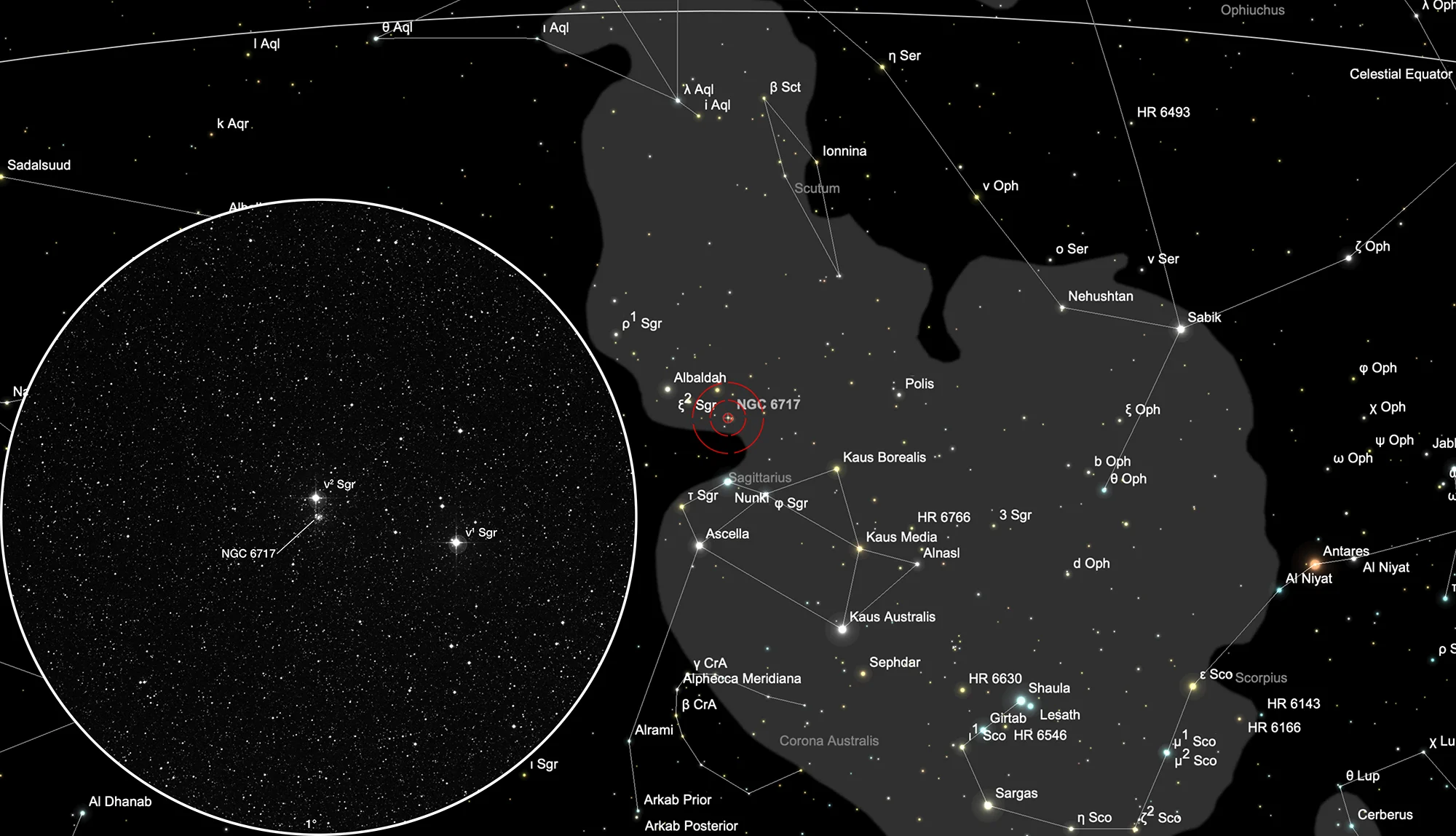Globular Cluster NGC 6717

History
This globular cluster was discovered by William Herschel on 7 August 1784 using his reflector of 18.7 inch aperture and 20 feet focal length. As he could not resolve the cluster he cataloged it as «very faint nebula» with III 143 and noted: «Three very small stars with suspected nebulosity.» [463] His son John observed the cluster on 1st July 1826 with his 18.25 inch reflector with 20 feet focal length, located in Slough. He cataloged it as h 2022 and noted: «A little knot of 8 or 10 stars crowded together. It is 1' 40" south of ν2 Sagittarii, and on same meridian.» [466] Few years later on 27 June 1837 during his stay in Feldhausen, South Africa, he observed the cluster again and cataloged it as h 3766 with the notes: «Close to the south of ν2 Sagittarii; a very small clustering knot, with perhaps nebula. A doubtful object. I see 3 or 4 of the stars, but there is also a nebulous appearance.» [11]
On 30 June 1884 the French astronomer Guillaume Bigourdan thought he found a «nebulosity around stars of 13 magnitudes, 15" north following III 143» and cataloged it as B 434. In 1888 John L. E. Dreyer added Herschel's object with NGC 6717 as «cluster with nebulosity» to his «New General Catalogue». [313] Bigourdans object was added later in 1912 as IC 4802 in the «Second Index Catalogue» [316]
In the 1950s the cluster was identified as a globular cluster by the American astronomer George Ogden Abell on photo plates from the Palomar Observatory Sky Survey. He was cataloged as Palomar 9. [331]
Physical Properties
NGC 6717 is located at a distance of 7.1 kpc from the Sun and 2.4 kpc from the Galactic centre, which places it in the bulge of the Milky Way. It has a dense core, which may indicate that it has undergone a core collapse. [148]
| Name | RA | Dec | Type | vMag | Dim | MD | Dreyer Description | Identification, Remarks |
|---|---|---|---|---|---|---|---|---|
| NGC 6717 | 18 55 06.2 | -22 42 01 | GCL (VIII) | 8.4 | 5.4 | 7.100 | F, S, rr, Cl + neb | WH III 143; h 2022=3766; GC 4444; Pal 9; GCL 105; ESO 523-SC14 |
| IC 4802 | 18 55 07.2 | -22 41 51 | *Grp | Neb * 13, 15" nf III 143 | in GCL N 6717=Pal 9 |
Finder Chart
The globular cluster is located in the constellation Sagittarius and the best time for observing is from March to December. On 5 July it is in opposition to the Sun and crosses the meridian at local midnight.
